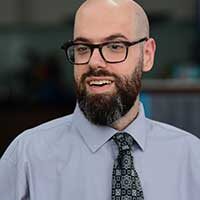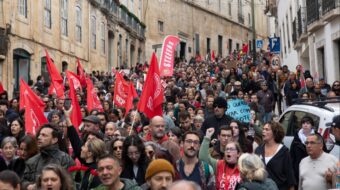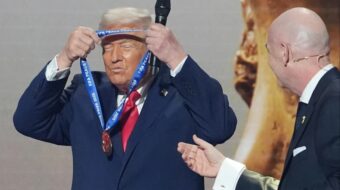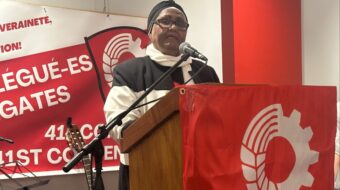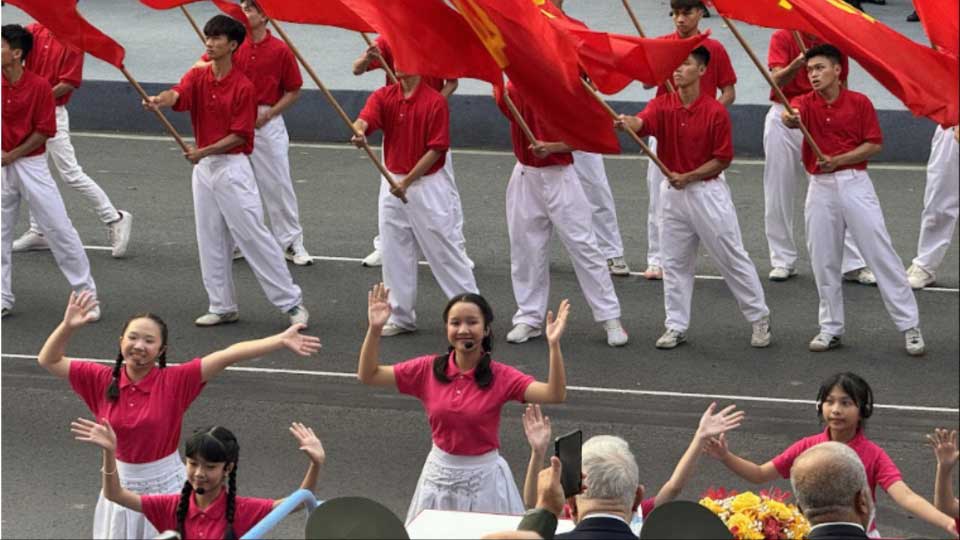
HO CHI MINH CITY, Vietnam—When Ho Chi Minh died in 1969, before the U.S. war on Vietnam had ended, he wrote: “My last desire is that our whole Party and people should stand in solidarity, striving to build a Vietnam of peace, unity, independence, democracy, and affluence, that would play a commensurate part in the international revolutionary cause.”
Six years later, on April 30, 1975, the Vietnamese people achieved a great victory over U.S. imperialism, successfully reuniting their country and fulfilling part of Ho Chi Minh’s final wish—to see a united, independent, democratic Vietnam. In the five decades since, the country has continued to strive toward fulfilling the entirety of Ho Chi Minh’s last will and testament.
To mark the 50th anniversary of national reunification, Ho Chi Minh City—formerly Saigon, the capital of the U.S.-backed puppet regime—hosted the largest celebration and parade in Vietnam’s history.
The current and former leaders of the Communist Party of Vietnam and the State of Vietnam were all in attendance. International dignitaries from around the world also joined the festivities. The presidents of Laos and Cambodia, the vice president of Cuba, and foreign ministers from Tanzania, Nicaragua, Algeria, and many other countries attended as official representatives.
The U.S. government boycotted the event. According to reports from The New York Times, President Donald Trump did not want any events overshadowing the marking of his 100th day in office. In contrast, Communist Party USA (CPUSA) Co-Chair Rossana Cambron led an official U.S. delegation to Vietnam, which was received with full honors.
Though described by some media as a military parade, the event was far more than that. It was a celebration of all segments of Vietnamese society; workers, intellectuals, farmers, and military personnel all had contingents marching in the parade.
Special military units from the People’s Republic of China, the Democratic People’s Republic of Laos, and the Kingdom of Cambodia marched alongside their Vietnamese comrades in recognition of the vital role these nations played in Vietnam’s victory.
In his opening address, To Lam, General Secretary of the Communist Party of Vietnam, also honored the contributions of the former USSR, the other countries of the former socialist bloc, and the “progressive, peace-loving peoples around the world” who stood in solidarity with Vietnam against U.S. aggression.
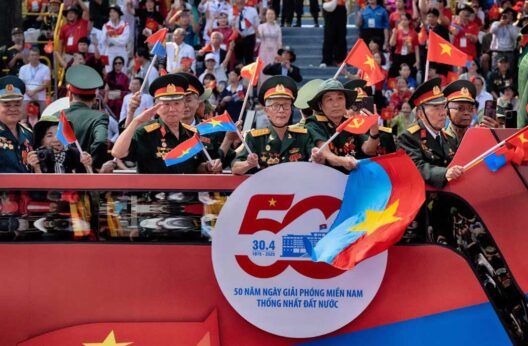
While the military presence was significant, the overarching message of the celebration was clear: Vietnam is a united country, living in peace. As To Lam said in his speech:
“In a world of increasingly complex and unpredictable developments, and as a nation having suffered so many losses and pain from past wars, we are deeply aware of the value of peace, independence, and freedom.”
A representative of the Ho Chi Minh Youth Union, the largest youth organization in Vietnam, also emphasized the importance of peace. She said:
“In these days of commemoration, as I gaze into the clear blue sky, where the flight of aircraft carrying the sacred red flag adorned with the golden star—oh, young hearts across our country feel even more deeply: Peace is truly beautiful!”
She continued, calling on the younger generation to inherit the gifts that the older generation sacrificed so much to provide and to continue developing Vietnam and paving the road to socialism.
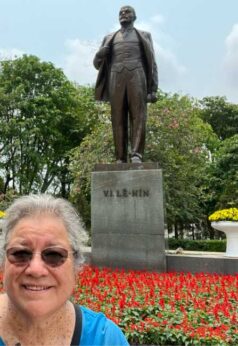
After the event, CPUSA Co-Chair Cambron remarked that she was moved by seeing what a country that puts people before profits can achieve. “In just a few decades,” she noted, “Vietnam has gone from a war-torn, impoverished nation to one that is at peace and committed to eliminating poverty while expanding social services.”
Cambron paid special tribute to Vietnam’s youth, stating:
“One of the most important messages of the event was the understanding of the youth that their role is to maintain peace and freedom and to use it to their advantage in helping to advance the entire country toward building a socialist society.”
Vietnamese people from across the country and around the world recognized the historic significance of the celebrations and descended on Ho Chi Minh City to mark this moment of peace and national unity. The event quickly became one of the largest public gatherings in Vietnam’s history. The night before the parade, the entire route was lined with people camping out and sleeping on the streets, hoping to secure a good spot to view the festivities.
Viet Anh, a Vietnamese American who traveled to attend the celebrations in Ho Chi Minh City, explained why it was so important for him to be there in person:
“As a Vietnamese American, coming to Saigon for the 50th anniversary feels really meaningful. I wanted to connect with where I come from, but also to reflect on what peace truly means,” he said. “Peace isn’t just the end of fighting; it’s something that has to be built and rebuilt with each generation.”
Viet Anh said he was there “to honor the people who sacrificed so much and to recognize that their struggle isn’t over. Socialism is still something worth fighting for, and what I saw here reminds me that we need to keep that struggle active, both in Vietnam and around the world.”
At a time of volatility and destabilization internationally, with rising conflict and increasing threats of violence around the globe, Vietnam’s 50th Reunification Day stands out as a beacon of peace, unity, and socialism.
Fifty years ago, this country and its people inspired the world by proving that imperialism can be defeated. Today, Vietnam continues to inspire by showing that peace is not only possible but achievable through collective will and socialist values.


